Privacy Policy | Terms and Conditions | Disclosure Statement | License Policy
COPYRIGHT © 2024 | NUMBER 8 COOKING | ALL RIGHTS RESERVED.

Privacy Policy | Terms and Conditions | Disclosure Statement | License Policy
COPYRIGHT © 2024 | NUMBER 8 COOKING | ALL RIGHTS RESERVED.

Privacy Policy | Terms and Conditions | Disclosure Statement | License Policy
COPYRIGHT © 2024 | NUMBER 8 COOKING | ALL RIGHTS RESERVED.
Do you find yourself nervously poking and prodding meat as it cooks, guessing if it’s done correctly? Stop the nail-biting stress with our easy meat thermometer guide. Confidently unlock the secret to meat perfection using a trusty meat thermometer.
Follow this meat thermometer masterclass; you’ll have deliciously moist chicken, correct steak doneness, and delicious roasts every time. I will share with you the correct way to use this handy kitchen gadget, how to calibrate it correctly, and three meat thermometer options you can use in your kitchen.
As a professional chef, I know too well that cooking meat perfectly to a specific internal temperature is vital to my profession. On the other hand, this is one of a home cook’s most significant challenges in the kitchen. Whether searing a steak or roasting a whole chicken, it’s challenging to gauge doneness by sight, touch, and timing alone.
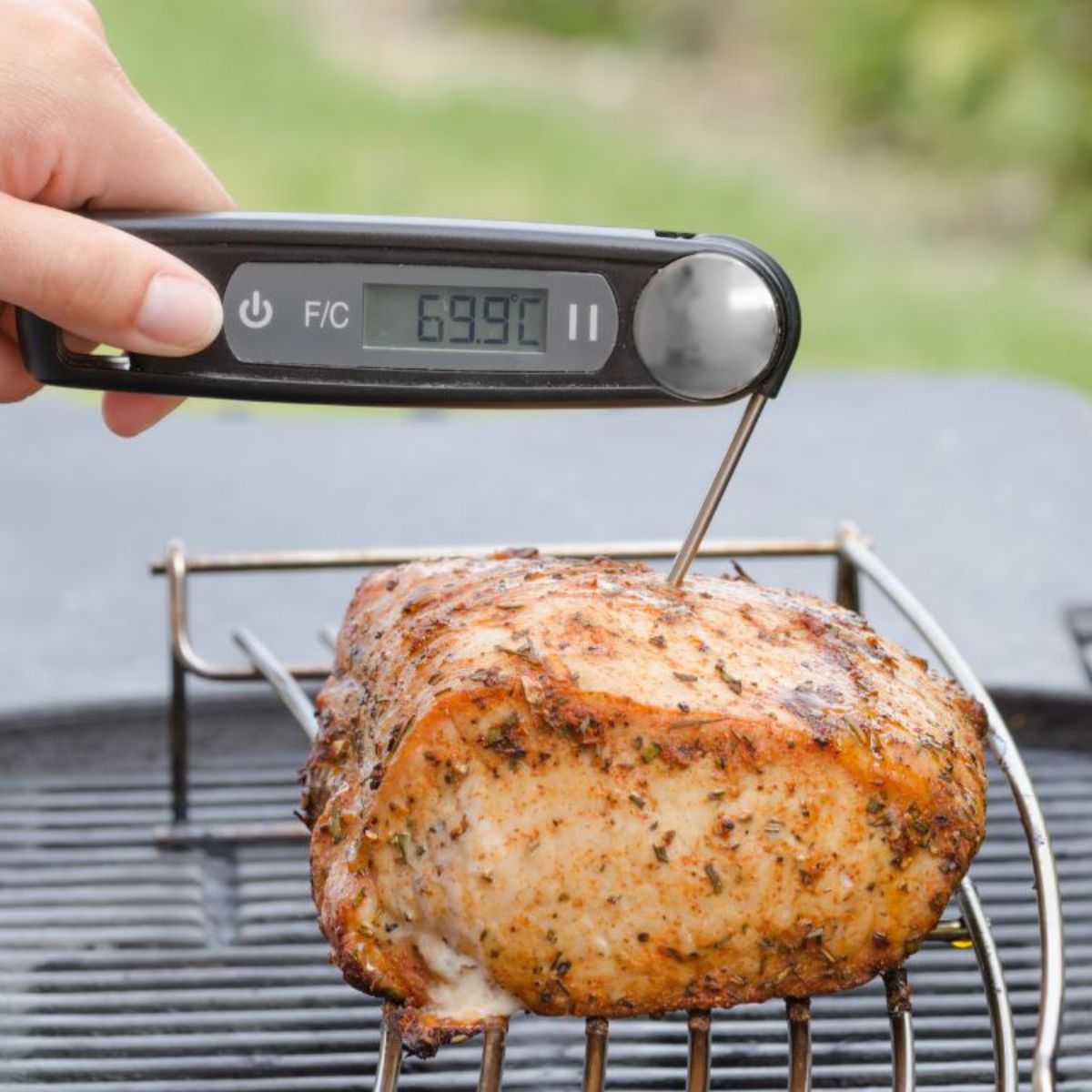
There are a few degrees of difference between serving a dry, overcooked disappointment and a succulent, tender triumph. This is why I’ve put together this easy meat thermometer guide. Meat thermometers are absolutely indispensable tools for cooks of all levels.
Easy meat thermometer guide — A meat thermometer solves under or overdone issues and food safety risks by giving an accurate internal temperature reading. This eliminates guesswork and uncertainty, so you’ll cook meat perfectly each time.
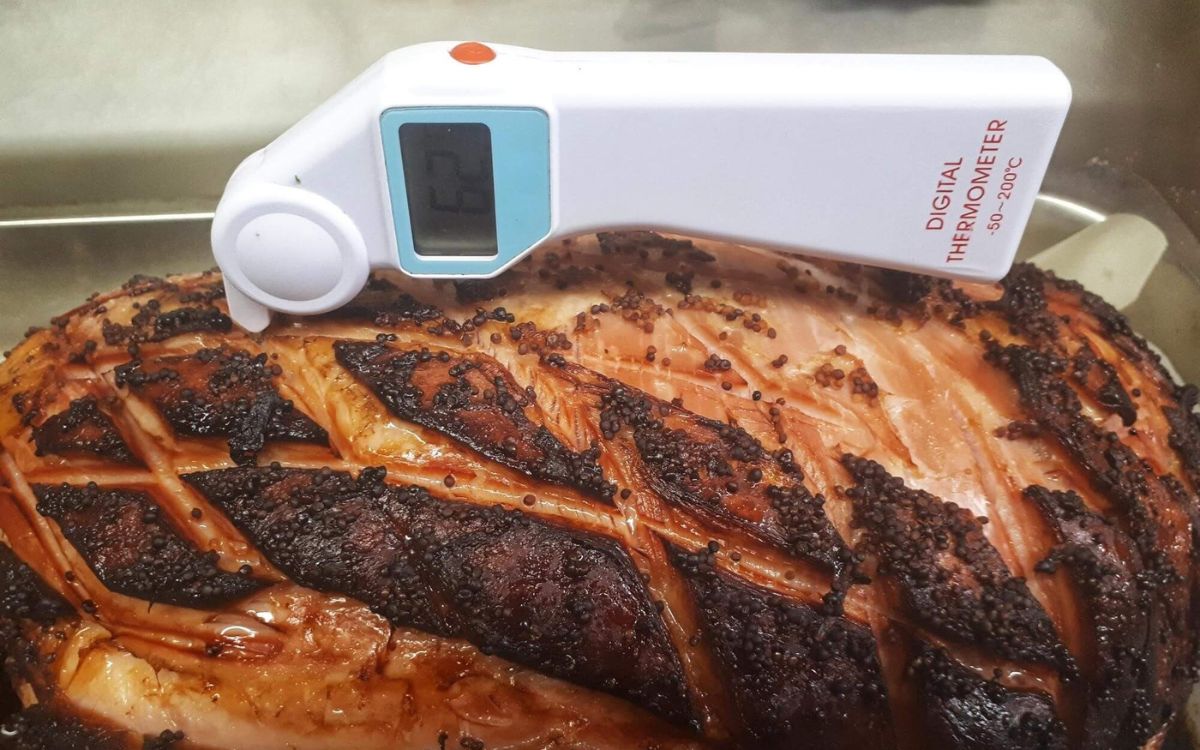
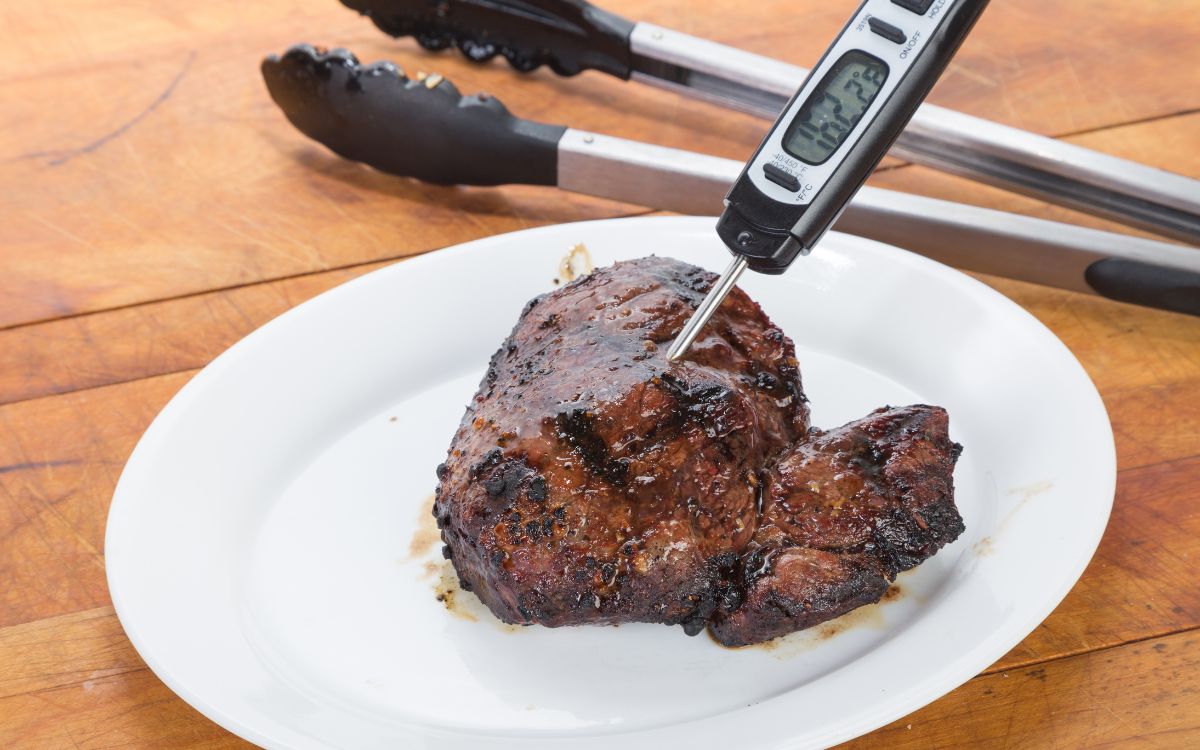
Easy meat thermometer guide — Always insert the thermometer probe into the meat’s thickest area to get an accurate temperature read. If cooking over direct heat and roasting trays, ensure it’s away from fat, bone, or the bottom of pans or grill plates.
If using multiple wired or wireless probes, insert one in the center and one on either end of the piece of meat you’re roasting or barbecuing. This way, you can monitor the whole piece of meat throughout the entire cooking time.
For smaller items like burgers, sausages, chicken breasts, seared steaks, fish fillets, or individual thinner pieces of meat. You can slide the probe in sideways to reach the actual center.
On whole birds or roasts, check inner areas like deep breasts, between the thigh and body, and the center of whole beef, pork, and lamb cuts.
Carryover cooking refers to the continued rise in the internal temperature of meats after being removed from the heat source. It happens because the hot exterior conducts heat inwards and continues cooking the meat. This is known as residual heat.
This temperature carryover means meats may increase another 3-5°C (5-10°F) as they rest after cooking. That could overshoot your desired doneness level if you aren’t accounting for it. Monitoring this temperature rise is critical.
To allow for carryover, remove meat anywhere from 3-5°C (5-10°F) below your target temperature, and always tent loosely with foil and allow ample resting time. The temperature will drift upwards and coast to ideal serving level.
Easy meat thermometer guide — Refer to this handy chart to pinpoint the ideal internal temperature for what you’re cooking, adjusting to your desired doneness:
Like any instrument, thermometers need occasional calibrating to ensure correct readings. Perform this simple calibration test monthly.
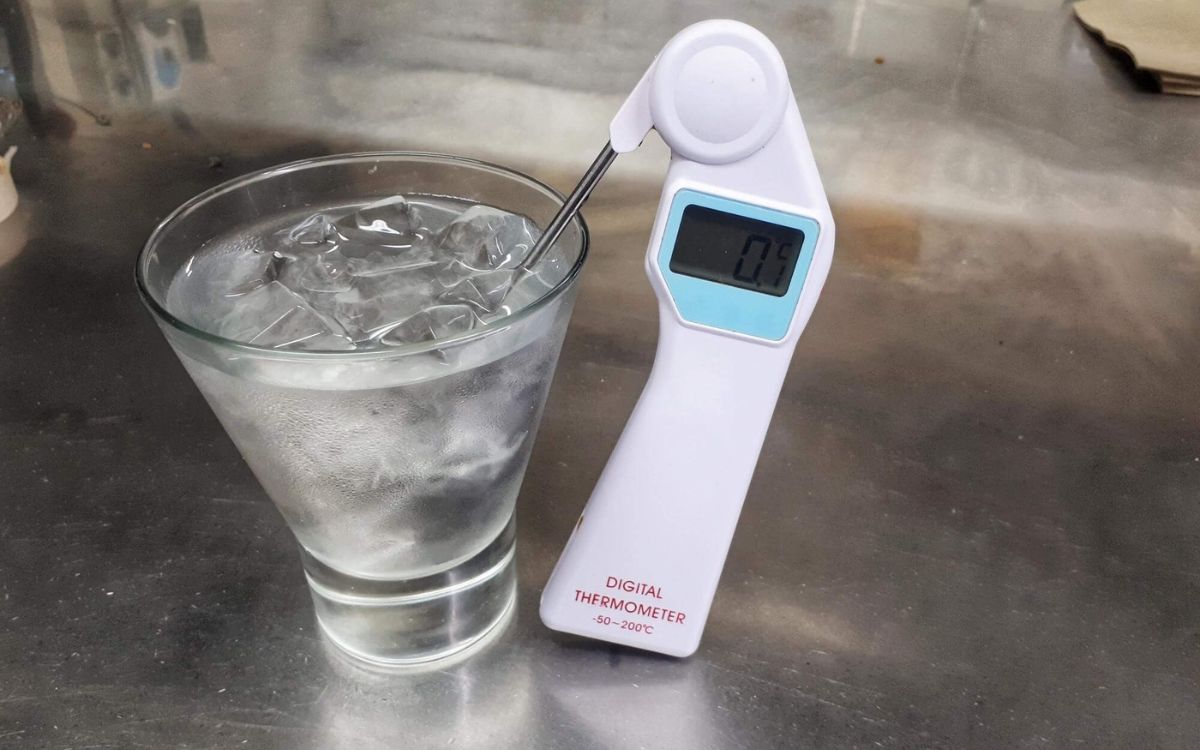
Easy meat thermometer guide — Properly cleaning your meat thermometer maintains accuracy and prevents the spreading of bacteria. Follow these simple sanitizing steps before/after every usage for best performance and food safety. Investing a few minutes keeps your thermometer hygienic for reliable, long-lasting operation.
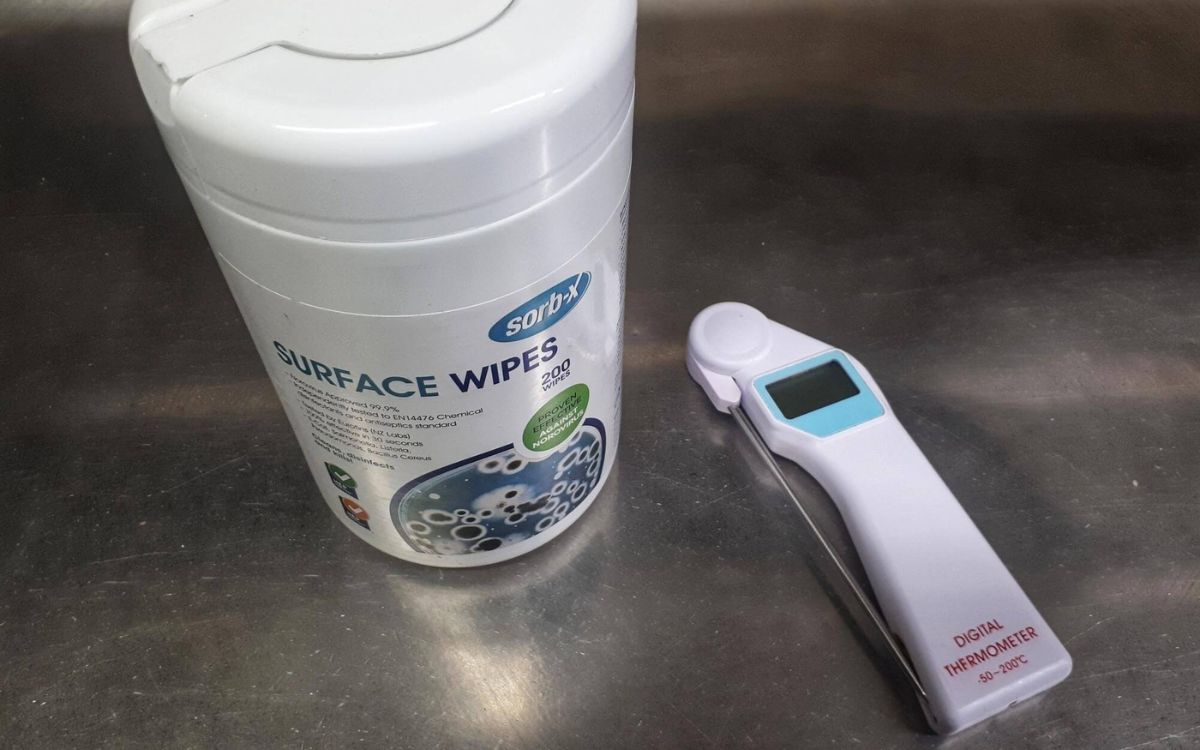
Choose a suitable thermometer. Pick a wireless, wired, or instant-read probe thermometer ideal for cooking.
Easy meat thermometer guide — With mindful use and proper care, a meat thermometer quickly pays for itself in consistent, restaurant-quality results.
Wireless digital meat thermometers separate the probe and monitor and communicate remotely. You insert the probe into raw, seasoned meat. While cooking, the meat sends internal temperature readings to the exterior unit.
Wireless thermometers work fabulously for larger roasts, whole birds, and hams since hands-free monitoring prevents the oven or grill from constantly reopening. Models with twin probes can track two spots on one piece of meat at once.
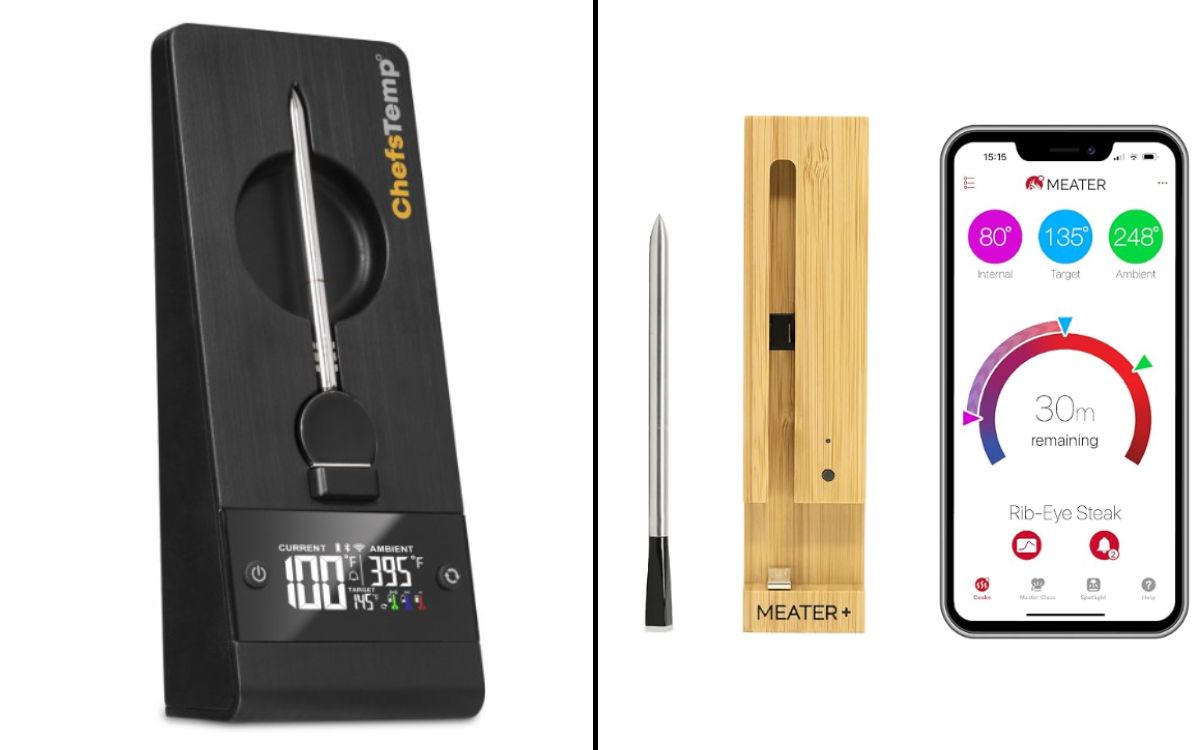
Convenient Temperature Monitoring — These use a wireless probe to monitor meat from a base unit or mobile device. This allows convenient temperature monitoring throughout the whole cook time without needing to open the grill or oven.
Instant-read thermometers use razor-sharp probe tips to deliver ultra-quick readings with a simple insertion. Having an instant thermometer on hand is extremely useful.
They are great for probing multiple areas on irregularly shaped cuts or scanning temps on burgers, sausages, chicken breasts, seared steaks, or individual thinner pieces of meat.
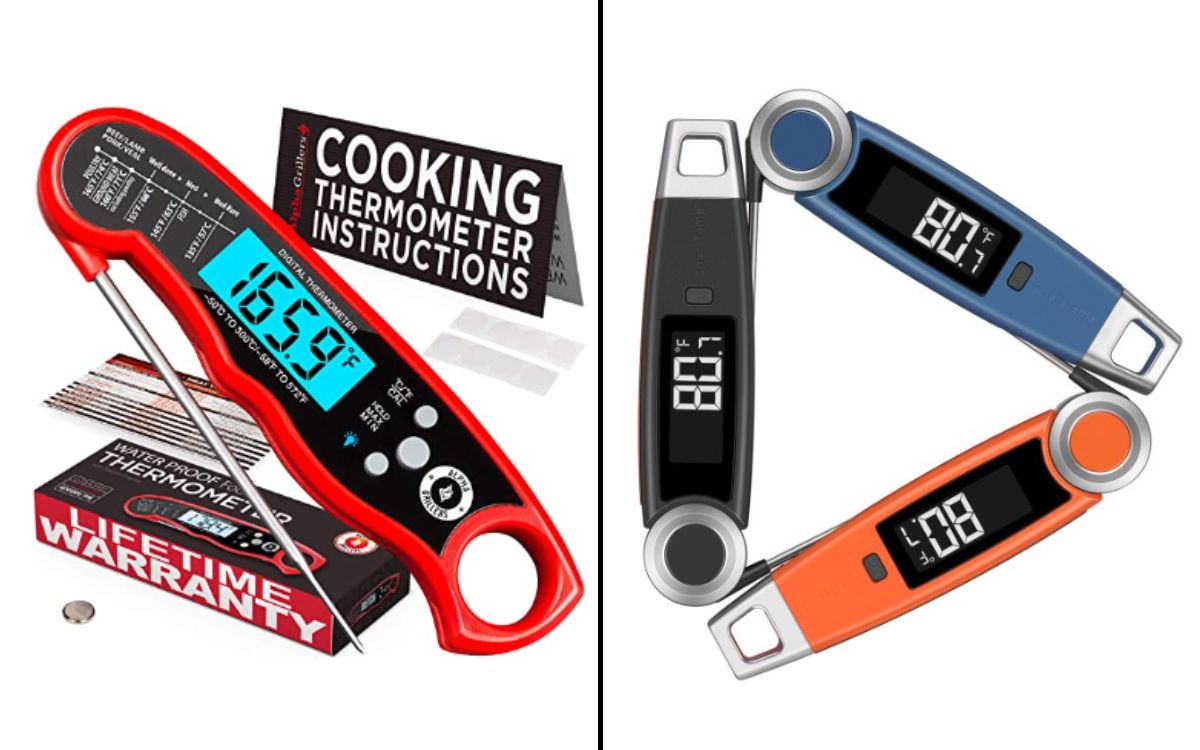
Quick Temperature Readings — The instant-read thermometers are the cornerstone of my kitchen. I use it to check the doneness of roast chicken, whole roasted lamb legs, beef rump, and glaze hams.
Classic wired thermometers have fixed probes and dial displays in a single handheld or stand unit. While they are less versatile, wired thermometers cost less and provide reliable accuracy.
They easily check whole cuts of meat like lamb legs, pork loin, beef rump, whole striploin, and ribeye throughout the entire cooking time. They are perfect for whole turkeys, chickens, and ducks.
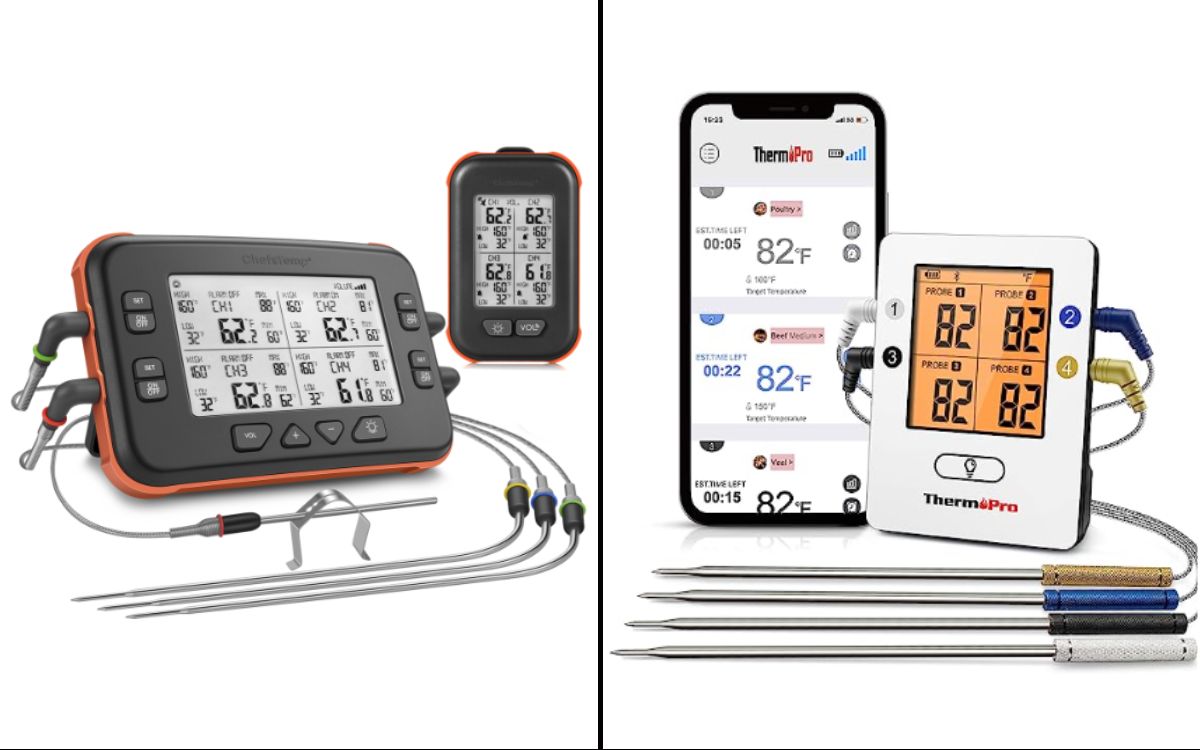
Classic Wired Thermometer — These leave a probe inserted in the meat inside a closed oven or grill, connected to an external digital unit for the cooking duration for hands-free monitoring.
Cooking is a science and a skill that requires a deep understanding of both the technical and creative aspects. Cooking is also a matter of precise measurements and ratios.
For example, baking is particularly sensitive to accurate measurements and temperatures. A slight deviation in the amount of an ingredient or cooking degrees can result in a completely different outcome. So, to help you, here is a handy little unit converter tool for cooking without guesswork.